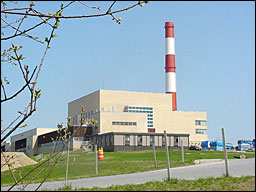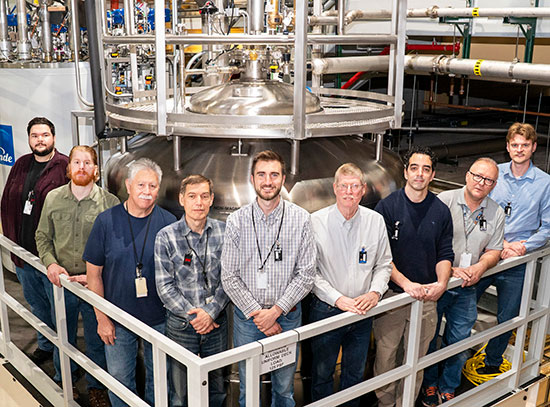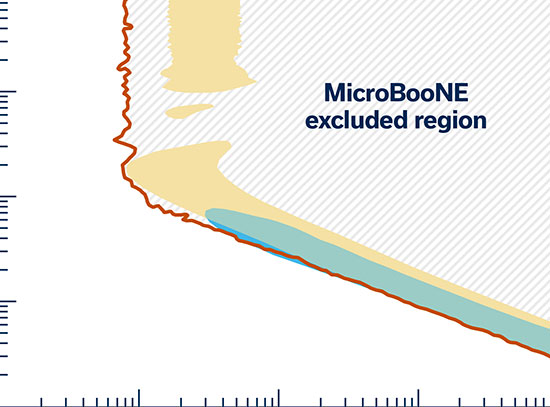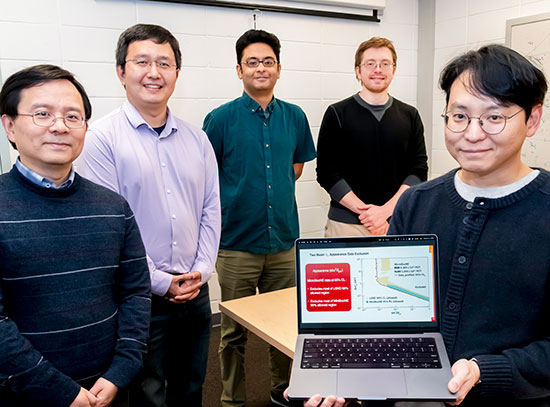Department of Energy, EPA, and N.Y. State Reach Agreement On Brookhaven Graphite Reactor Cleanup
April 11, 2005
The U.S. Department of Energy and Brookhaven Lab today issued the following news release. DOE contct: John Carter, (631)344-5195. BNL contact: Peter Genzer, (631)344-3174.

Brookhaven Graphite Research Reactor
Upton, NY — The U.S. Department of Energy (DOE), the U.S. Environmental Protection Agency (EPA), and the NY. State Department of Environmental Conservation (NYSDEC) have agreed on a cleanup plan for Brookhaven National Laboratory's (BNL) Graphite Research Reactor (BGRR). The agreement, reached after extensive regulator and public review and comment, allows the Energy Department to implement the selected remedy. It also marks an important milestone in DOE's plan to complete cleanup of the Laboratory site.
The remedy is detailed in a document called the "Brookhaven Graphite Research Reactor Record of Decision (ROD)." The document is available at the libraries listed below, and on the Brookhaven web site at http://www.bnl.gov/bgrr/.
The ROD presents the selected remedial actions for the BGRR. The selected remedy includes several cleanup actions that have already been accomplished, the near term removal of more than 99 percent of the remaining radioactive contamination found in the complex, and the implementation of a comprehensive long-term monitoring program. The ROD also includes a "responsiveness summary," summarizing public comments and the DOE's responses to them.
Background
The BGRR, which was the first reactor in the world built solely to perform scientific research on peaceful uses of the atom, operated from 1950 to 1968. The BGRR complex consists of several structures and systems that were used to operate and maintain the research reactor. Some of the equipment, structures, and surrounding soils are contaminated as the result of reactor operations.
During its operation, the BGRR used radioactive fuel to create the chain reactions necessary for research to be performed. The chain reactions occurred within the graphite "pile," which is located inside Building 701. A thick biological shield, which minimized radiation within the building, surrounds the pile. Cooling air flowed through the pile then exited through below-ground and above-ground ducts. Spent fuel was transferred from the pile to a canal beneath the reactor before being disposed of off the BNL site.
As the result of its past operations, the BGRR currently contains approximately 8,050 curies of radioactive contaminants, including hydrogen-3 (tritium) and carbon-14, and fission products cesium-137 and strontium-90. The pile and biological shield contain over 99 percent of the remaining radiological inventory in the BGRR complex.
Over the past five years, several interim cleanup actions have been completed, and others are now planned or under way. These actions include the removal of above-ground concrete air ducts and equipment from an associated fanhouse, removal of exhaust filters and the primary liner from below-ground air ducts, and disposal of other contaminated equipment, pipes, and concrete structures.
Details of Selected Remedy
The Comprehensive Environmental Response, Compensation, and Liability Act (CERCLA, which is also known as the Superfund Act), requires that a selected cleanup remedy protect human health and the environment. The cleanup remedy also must be cost-effective, comply with other laws, and, to the greatest extent practical, use permanent solutions, alternative treatment technologies, and resource-recovery alternatives. Based on earlier investigations and input received from BNL's regulatory agencies and members of the public, the Department of Energy developed four cleanup alternatives for the graphite reactor. All four alternatives included the completion of actions that are currently under way or planned, followed by long-term response actions, including water-infiltration management, surveillance and maintenance, and institutional controls. The four alternatives were presented to the community, and a final remedy was selected by DOE, EPA, and NYSDEC following solicitation and review of additional community input.
The selected remedy, "Alternative C," will remove a total of 8,093 curies of radioactive material from the BGRR complex, including the long-lived radioisotopes, accessible pockets of contaminated soil, and portions of the canal structure. This remedy also calls for the removal of the pile, the biological shield, and reasonably accessible soil contaminants that pose a threat of exposure through potential migration to groundwater. Approximately 1.5 curies, primarily cesium-137 and strontium-90, would remain in contaminated structures below Building 701 and within the below-ground air ducts. These contaminants are bound within concrete, embedded within steel, or located within areas that are currently inaccessible and are not considered a potential groundwater-contamination source.
Long-term activities would include routine inspection and surveillance of the BGRR facility, scheduled upkeep and maintenance of Building 701, water-infiltration management, groundwater monitoring, and provisions requiring removal of contaminated soil that may become accessible during future work.
The Brookhaven Graphite Research Reactor Record of Decision is available for review at http://www.bnl.gov/bgrr on the Web, and also at the Mastics/Moriches/Shirley public library in Shirley, at the BNL library, and at the U.S. Environmental Protection Agency, Region II library in New York City. For further information, call John Carter, U.S. Department of Energy, at 631 344-5195, or Jen Clodius, Brookhaven National Laboratory, at 631 344-2489.
Environmental remediation at Brookhaven Lab is carried out under requirements of the federal Comprehensive Environmental Response, Compensation, and Liability Act of 1980. Past operations at the Laboratory have resulted in soil and groundwater contamination. Remediation work is conducted under the framework of an interagency agreement among the U.S. Department of Energy, the U.S. Environmental Protection Agency, and N.Y. State Department of Environmental Conservation. The Department of Energy owns the Brookhaven property, and oversees and funds the cleanup program.
2005-10302 | INT/EXT | Newsroom









